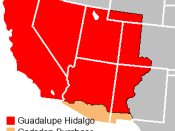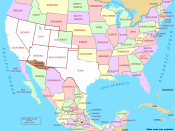Compromise of 1850
Compromise of 1850. The annexation of Texas to the United States and the gain of new territory by the Treaty of Guadalupe Hidalgo at the close of the Mexican War (1848) aggravated the hostility between North and South concerning the question of the extension of slavery into the territories. The antislavery forces favored the proposal made in the Wilmot Proviso to exclude slavery from all the lands acquired from Mexico. This, naturally, met with violent Southern opposition. When California sought (1849) admittance to the Union as a free state, a grave crisis threatened. Also causing friction was the conflict over the boundary claims of Texas, which extended far westward into territory claimed by the United States. In addition, the questions of the slave trade and the fugitive slave laws had long been vexing. There was some fear that, in the event of strong antislavery legislation, the Southern states might withdraw from the Union altogether.
The possibility of the disintegration of the Union was deprecated by many but was alarming to some, among them Henry Clay, who emerged from retirement to enter the Senate again. President Taylor was among those who felt that the Union was not threatened; he favored admission of California as a free state and encouragement of New Mexico to enter as a free state. These sentiments were voiced in Congress by William H. Seward. John C. Calhoun and other Southerners, particularly Jefferson Davis, maintained that the South should be given guarantees of equal position in the territories, of the execution of fugitive slave laws, and of protection against the abolitionists.
Clay proposed that a series of measures be passed as an omnibus compromise bill. Support for this plan was largely organized by Stephen A. Douglas. The measures were the admission of California as...


